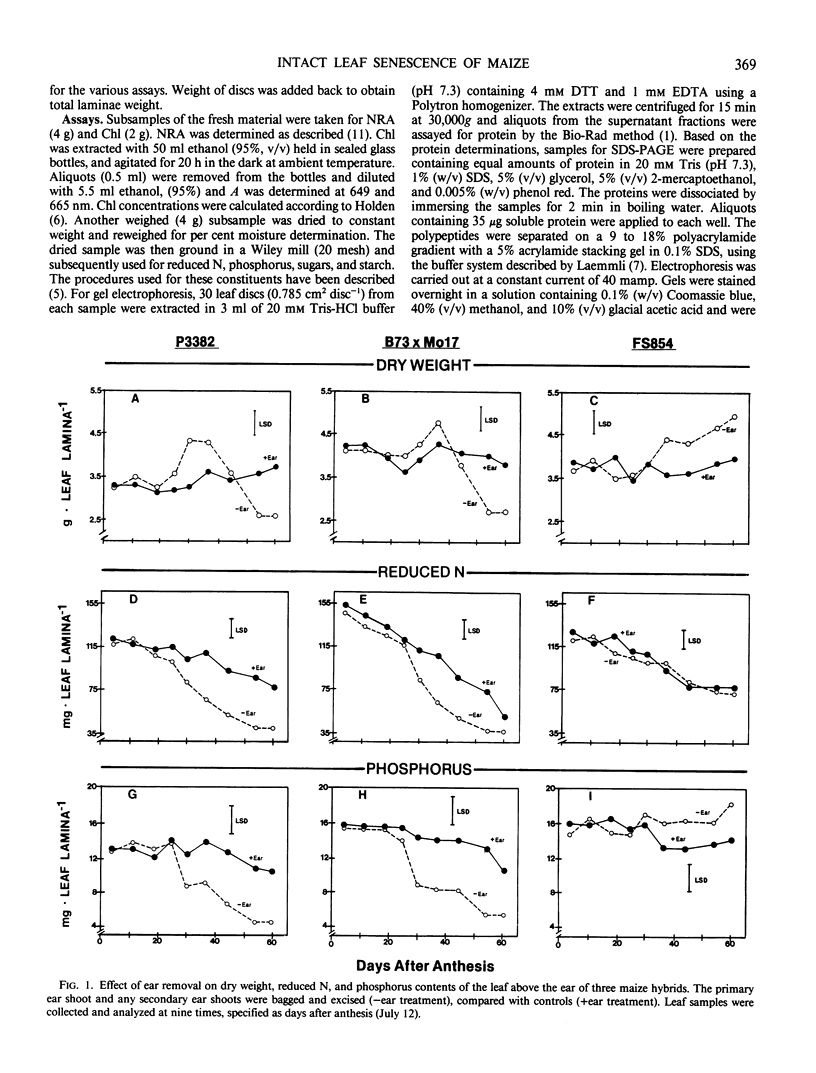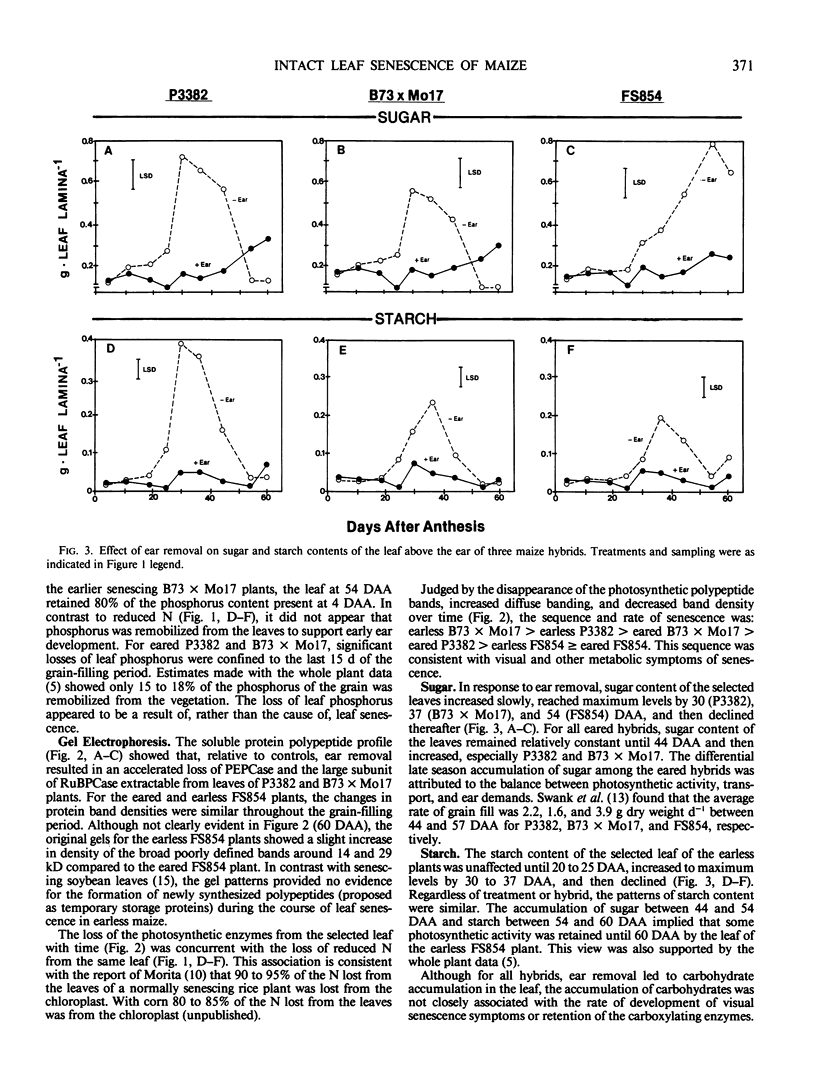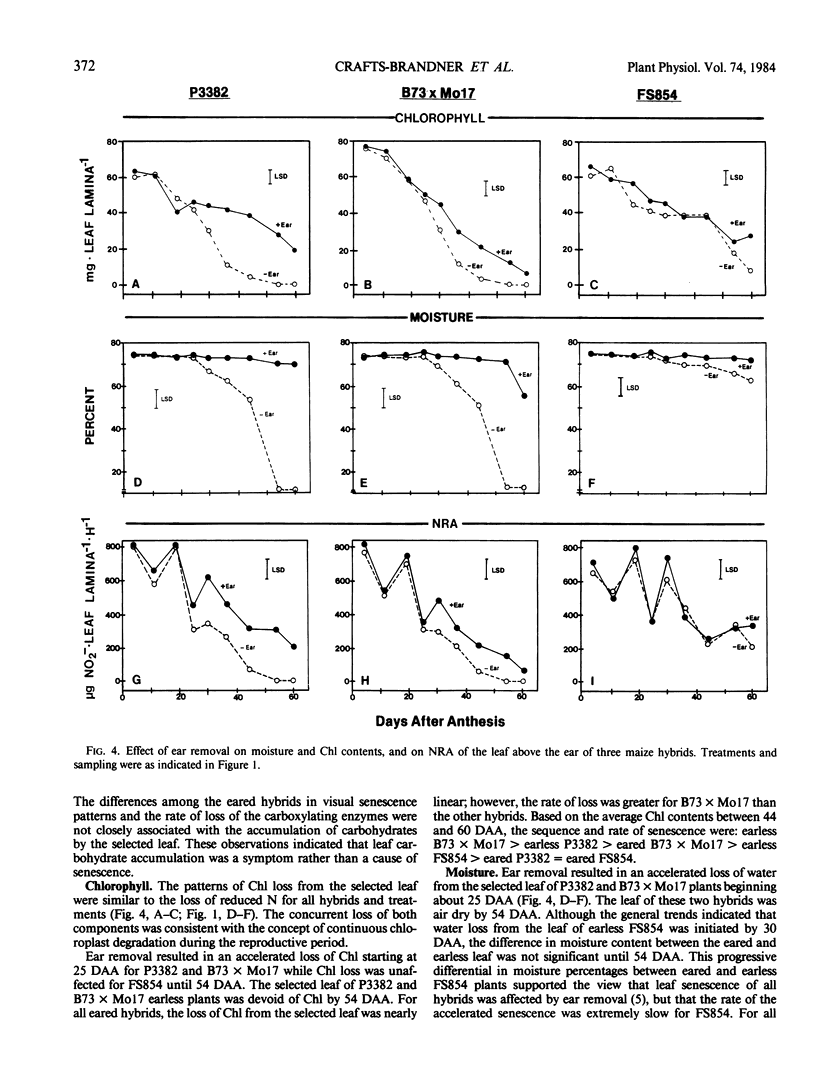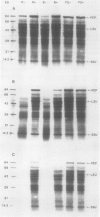Abstract
In conjunction with a study of the effects of ear removal on the senescence of whole maize (Zea mays L.) plants, visual symptoms and associated changes in constituent contents and activities of a selected leaf (first leaf above the ear) were determined. Leaves were sampled from field-grown eared and earless Pioneer brand 3382, B73 × Mo17, and Farm Services brand 854 maize hybrids at nine times during the grainfilling period.
Visual symptoms indicated the following sequence and rate of senescence: earless B73 × Mo17 > earless P3382 » eared B73 × Mo17 » eared P3382 ≤ earless FS854 > eared FS854. All earless hybrids showed increases in leaf dry weight and sugar content; however, the increases were transitory for P3382 and B73 × Mo17, but continuous throughout the grain-filling period for FS854, indicative of continued photosynthetic activity of the latter. All earless hybrids exhibited similar and transitory starch accumulation patterns. Thus, FS854 was an exception to the concept that carbohydrate accumulation accelerates leaf senescence. Ear removal resulted in accelerated losses of reduced N, phosphoenolpyruvate and ribulose bisphosphate carboxylases, phosphorus, chlorophyll, nitrate reductase activity, and moisture for P3382 and B73 × Mo17 plants. In contrast, the loss of all components (except phosphorus) was similar for the selected leaf of earless and eared FS854.
Although the loss of nitrate reductase activity, reduced N, and carboxylating enzymes accurately reflected the development of senescence of the selected leaf, the rate of net loss of reduced N and carboxylating enzymes appeared to be regulated. We deduced that the rate of flux of N into the leaf was a factor in regulating the differing rates of senescence observed for the six treatments; however, we cannot rule out the possibility of concurrent influence of growth regulators or other metabolites.
Full text
PDF





Images in this article
Selected References
These references are in PubMed. This may not be the complete list of references from this article.
- Christensen L. E., Below F. E., Hageman R. H. The effects of ear removal on senescence and metabolism of maize. Plant Physiol. 1981 Nov;68(5):1180–1185. doi: 10.1104/pp.68.5.1180. [DOI] [PMC free article] [PubMed] [Google Scholar]
- Crafts-Brandner S. J., Below F. E., Harper J. E., Hageman R. H. Differential Senescence of Maize Hybrids following Ear Removal : I. Whole Plant. Plant Physiol. 1984 Feb;74(2):360–367. doi: 10.1104/pp.74.2.360. [DOI] [PMC free article] [PubMed] [Google Scholar]
- Laemmli U. K. Cleavage of structural proteins during the assembly of the head of bacteriophage T4. Nature. 1970 Aug 15;227(5259):680–685. doi: 10.1038/227680a0. [DOI] [PubMed] [Google Scholar]
- Reed A. J., Below F. E., Hageman R. H. Grain Protein Accumulation and the Relationship between Leaf Nitrate Reductase and Protease Activities during Grain Development in Maize (Zea mays L.): I. VARIATION BETWEEN GENOTYPES. Plant Physiol. 1980 Jul;66(1):164–170. doi: 10.1104/pp.66.1.164. [DOI] [PMC free article] [PubMed] [Google Scholar]
- Shaner D. L., Boyer J. S. Nitrate Reductase Activity in Maize (Zea mays L.) Leaves: I. Regulation by Nitrate Flux. Plant Physiol. 1976 Oct;58(4):499–504. doi: 10.1104/pp.58.4.499. [DOI] [PMC free article] [PubMed] [Google Scholar]
- Swank J. C., Below F. E., Lambert R. J., Hageman R. H. Interaction of carbon and nitrogen metabolism in the productivity of maize. Plant Physiol. 1982 Oct;70(4):1185–1190. doi: 10.1104/pp.70.4.1185. [DOI] [PMC free article] [PubMed] [Google Scholar]
- Wittenbach V. A. Effect of pod removal on leaf senescence in soybeans. Plant Physiol. 1982 Nov;70(5):1544–1548. doi: 10.1104/pp.70.5.1544. [DOI] [PMC free article] [PubMed] [Google Scholar]



